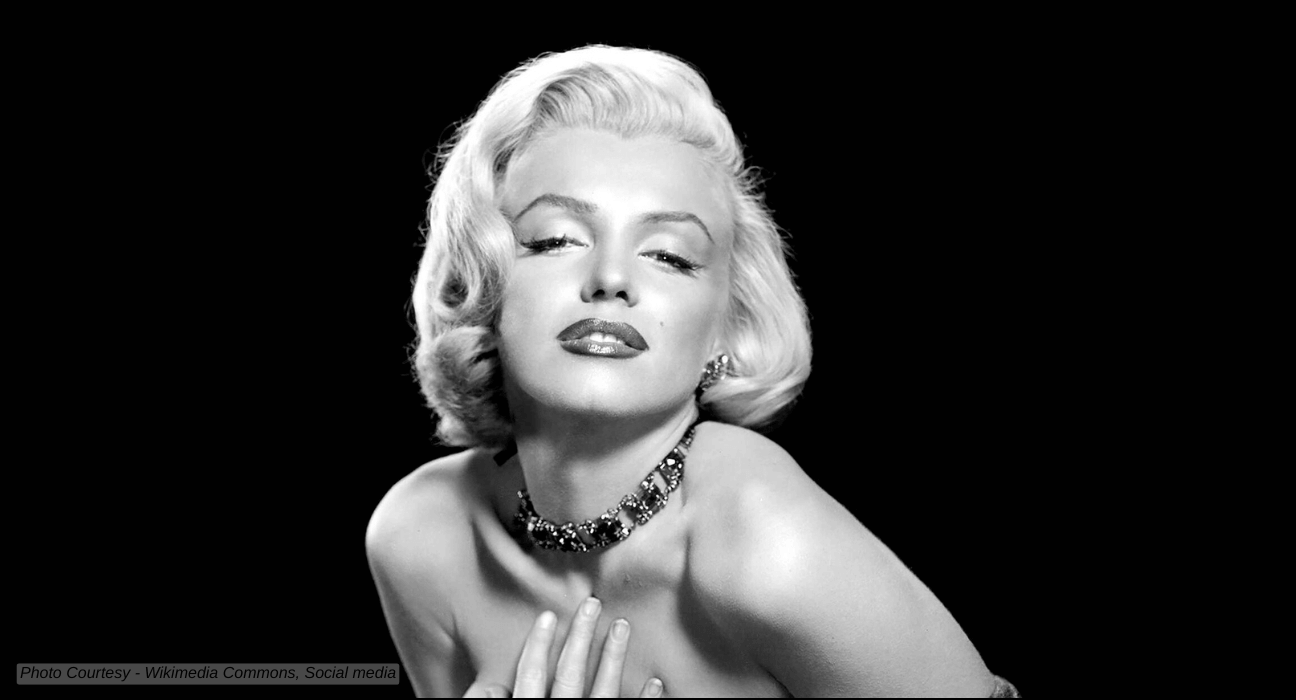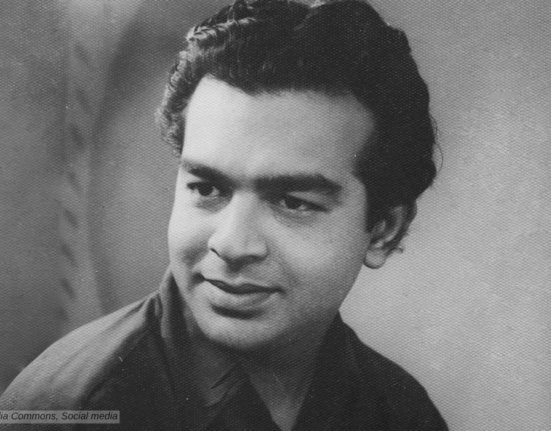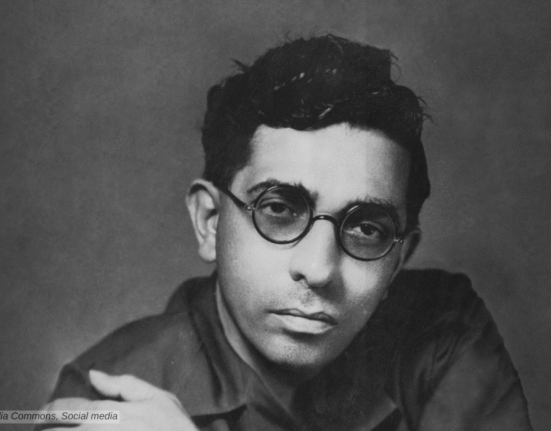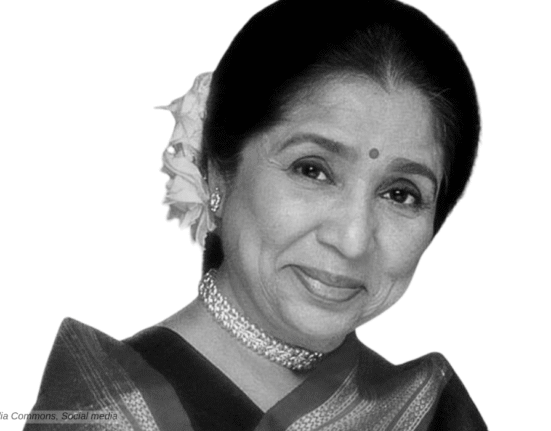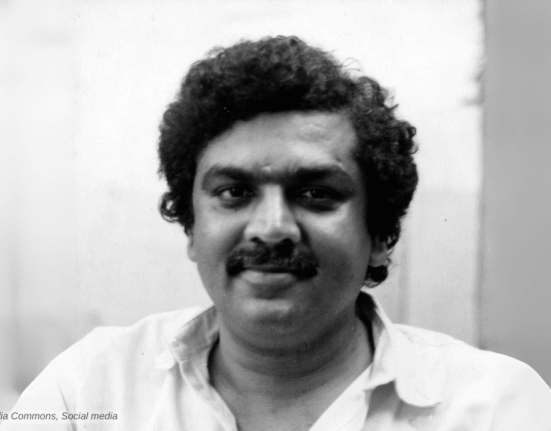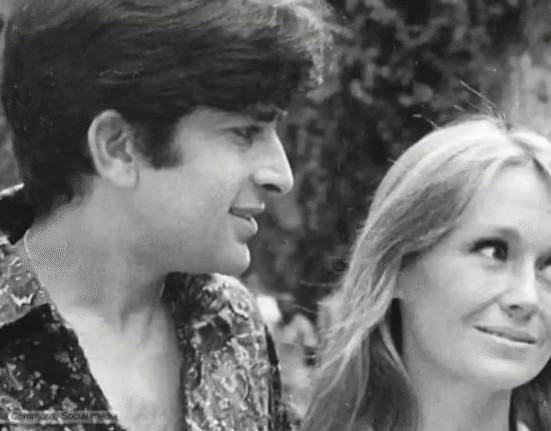The star of the celluloid, the darling of the masses, a beauty loved by all, Marilyn Monroe, died on August 4, 1962, at age 36. Monroe remains a global icon, celebrated for her roles in films like Gentlemen Prefer Blondes (1953), The Seven Year Itch (1955), Some Like It Hot (1959), and her enduring blonde bombshell persona. Despite her unprecedented success, which made her a living legend, Monroe remained tragic. All her life she was exploited, taken advantage of and left bruised and battered by almost everyone.
Early Life and Career
Marilyn Monroe was born on June 1, 1926, at Los Angeles County Hospital, California, as Norma Jeane Mortenson. Her mother, Gladys Pearl Baker, a film cutter, suffered from paranoid schizophrenia and was often institutionalised. Her biological father, Charles Stanley Gifford, confirmed via DNA testing, had no role in her life.
Monroe’s childhood was turbulent, marked by foster homes and orphanages. Her mother’s mental illness and financial struggles led to Monroe’s placement with the Bolender family at age two weeks. At seven, Gladys briefly regained custody, but a mental breakdown in 1935 sent her to a state hospital. Monroe then lived with Grace Goddard, Gladys’ friend, until Goddard’s husband molested her. She moved to Grace’s Aunt Ana, then back to the Goddards, before entering the Los Angeles Orphan’s Home in 1935. At 16, facing a return to the orphanage, she married neighbour James Dougherty in 1942.
Monroe’s formal education was limited due to her unstable childhood. She attended Emerson Junior High School in Los Angeles and Van Nuys High School but dropped out at 16 to marry Dougherty. Despite lacking a high school diploma, she pursued self-education later, owning 400 books, including works by Tolstoy and Whitman. She took literature courses at UCLA and studied acting at the Actors’ Studio in New York under Lee Strasberg, honing her craft in the mid-1950s.
Marilyn Monroe On Screen
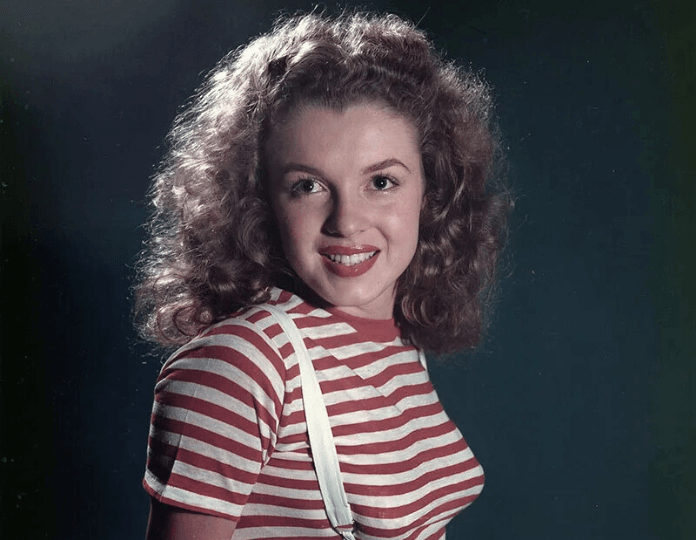
Monroe’s entertainment career began during World War II. While working at a munitions factory in 1944, photographer David Conover spotted her for a propaganda shoot, launching her pin-up modeling career. Her photos in magazines caught Hollywood’s attention, leading to a screen test with 20th Century Fox in 1946. She adopted the stage name Marilyn Monroe, combining her grandmother’s surname with a name suggested by talent director Ben Lyon.
Early roles included uncredited parts in The Shocking Miss Pilgrim (1947) and Scudda-Hoo! Scudda-Hay! (1948). Her breakthrough came with The Asphalt Jungle (1950) and All About Eve (1950), securing a new Fox contract.
Her 1949 nude photoshoot for a calendar, taken during financial hardship, surfaced in 1952, threatening her career. She defused the scandal by admitting she posed for $50 to survive, earning public sympathy. Her starring role in Niagara (1953) as a femme fatale propelled her to stardom. Directed by Henry Hathaway, Monroe played Rose Loomis, a scheming wife. Her seductive performance earned critical praise, cementing her star status.
The Screen Goddess
In Gentlemen Prefer Blondes (1953), directed by Howard Hawks, she played Lorelei Lee, a gold-digging singer. In the film her chemistry with Jane Russell was widely praised. Her iconic “Diamonds Are a Girl’s Best Friend” number became a cultural touchstone.
One of her most iconic films was The Seven Year Itch (1955), directed by Billy Wilder. Monroe’s role as “The Girl” featured the iconic subway grate scene, with her dress billowing upward.
In the 1956 romantic comedy “Bus Stop,” directed by Joshua Logan, she played Chérie, a vulnerable saloon singer. Her Ozark accent and dramatic performance earned her a Golden Globe nomination.
Monroe again collaborated with Billy Wilder for Some Like It Hot (1959), where she played Sugar Kane, a singer in an all-female band. Her comedic timing alongside Tony Curtis and Jack Lemmon won her a Golden Globe.
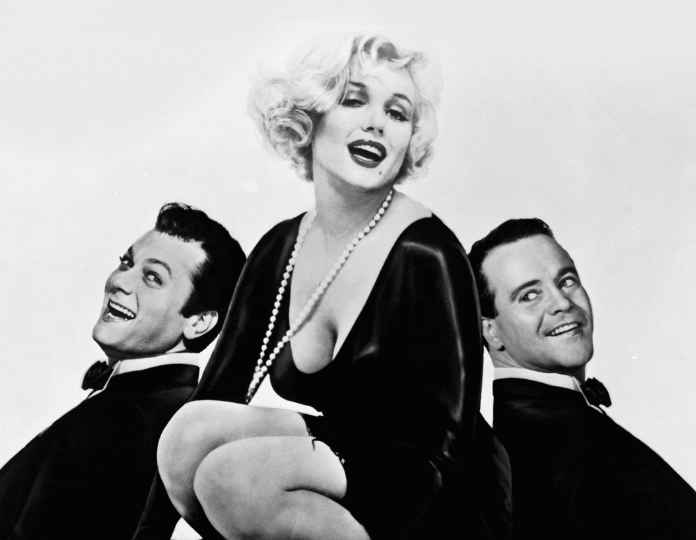
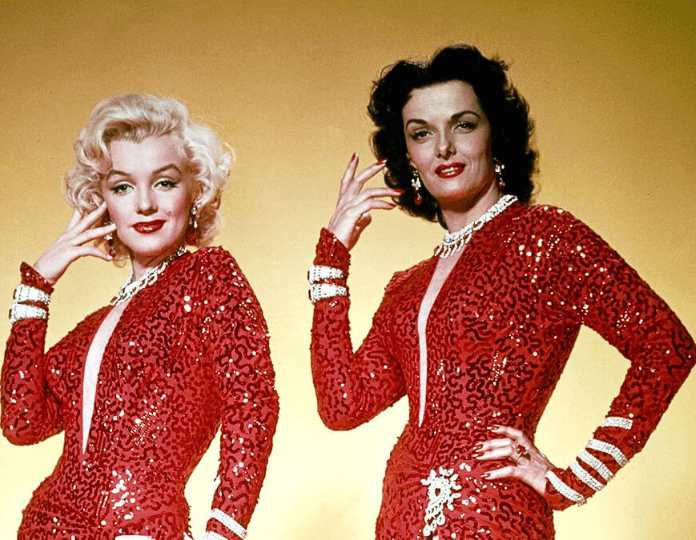
The Fashion Icon
Marilyn Monroe’s fashion defined mid-20th-century glamour. She favored form-fitting dresses to accentuate her figure, often designed by William Travilla. Her white halter dress in The Seven Year Itch (1955), billowing over a subway grate, became iconic, fetching $4.6 million at auction in 2011. For JFK’s 1962 birthday gala, she wore a sheer, rhinestone-encrusted gown by Jean Louis, sewn onto her body, costing $12,000. Her off-screen style included capri pants, sweaters, and minimal makeup, contrasting her glamorous roles. She popularized bold red lipstick and winged eyeliner, influencing beauty trends. Her wardrobe, blending sensuality with simplicity, remains a fashion benchmark, per Vogue.
Monroe’s public antics kept her in the spotlight. She orchestrated wardrobe malfunctions, like a split skirt at a 1954 press event, to generate buzz. Her tardiness on sets, like Some Like It Hot, frustrated directors but added to her enigmatic image. At public events, she exuded charm, as seen at the 1950 All About Eve premiere, where she captivated audiences despite a minor role. Her 1962 Madison Square Garden performance, singing “Happy Birthday” to JFK in a skin-tight gown, drew gasps for its boldness. She made strategic appearances, like at USO shows during her 1954 Japan honeymoon with DiMaggio, entertaining troops. These moments, planned or spontaneous, reinforced her star power, per The New York Times.
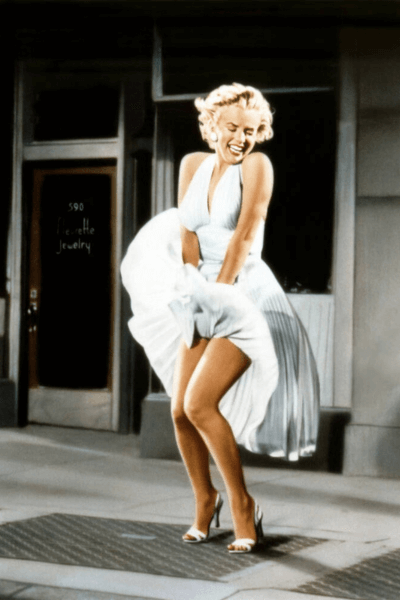
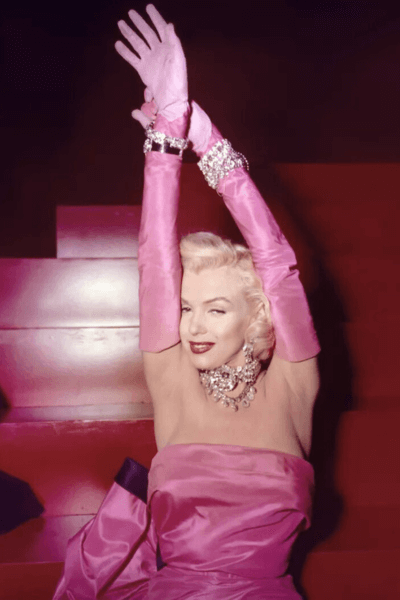
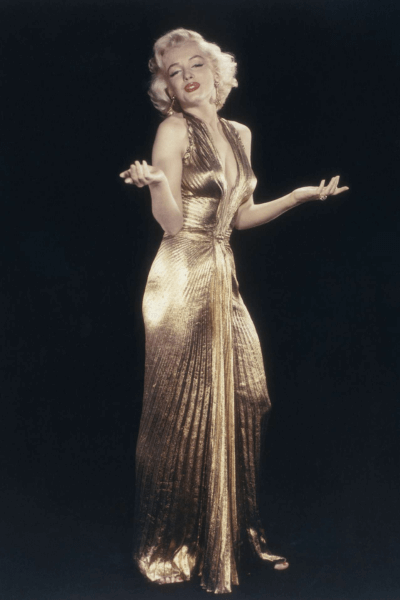
The Blonde Bombshell
Marilyn Monroe’s stardom stemmed from her crafted blonde bombshell persona, blending sensuality with comedic charm. She commanded $100,000 per film by the mid-1950s, a top salary for the era. She played ditzy yet seductive characters in films like Gentlemen Prefer Blondes (1953) and The Seven Year Itch (1955). Her breathy voice, developed to mask a childhood stutter, became a trademark.
Directors like Billy Wilder capitalized on her sensuality, as seen in the iconic subway grate scene in The Seven Year Itch. She portrayed naive but charming women, often gold-diggers or singers, in comedies. Her expressive eyes and playful delivery, noted by critic Bosley Crowther, made her a box-office draw. Her publicity stunts, like wardrobe malfunctions, kept her in headlines, though her image as a “dim-witted” blonde was a calculated act, as noted by scholar Thomas Harris.
Off-screen, Monroe cultivated a glamorous yet vulnerable persona. She posed for pin-up photos early in her career, gaining fame as a model before acting. Her public image blended allure with innocence, appealing to both men and women. She attended high-profile events, like the 1953 Photoplay Awards, in revealing gowns that sparked headlines. Her candid interviews, discussing her foster home upbringing, added relatability, as noted by biographer Lois Banner. She balanced this with a “dumb blonde” act, which she admitted was performative, per Time magazine.
Personal Life
Marilyn Monroe’s personal life was marked by instability. Rumors of affairs with President John F. Kennedy and Robert F. Kennedy fueled speculation, particularly after her sultry “Happy Birthday” performance for JFK at Madison Square Garden in 1962. No concrete evidence supports these claims, per historian Carl Rollyson. Her marriages to Joe DiMaggio (1954) and Arthur Miller (1956–1961) drew scrutiny, with DiMaggio’s jealousy and Miller’s intellectual mismatch causing public drama.
Her firing from Something’s Got to Give in June 1962 for tardiness and drug dependency sparked media outrage, though she was rehired before her death.
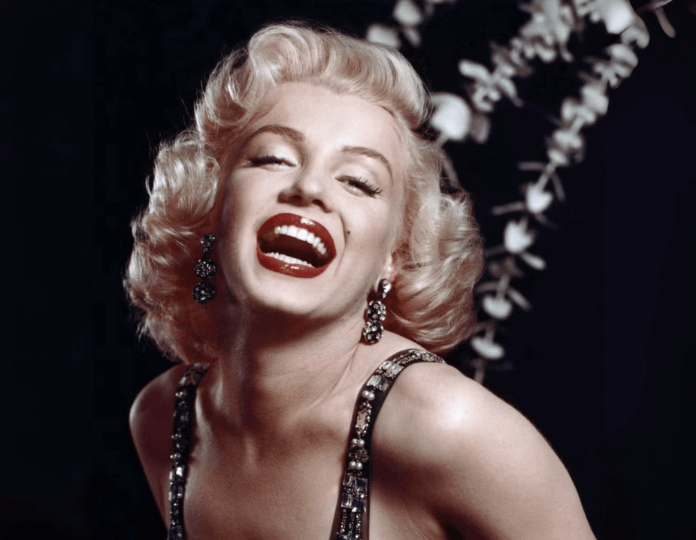
Mental Health Struggles
Marilyn Monroe battled severe mental health issues. Her mother’s paranoid schizophrenia raised fears of inherited illness. She suffered from insomnia, anxiety, and depression, relying on barbiturates and alcohol. In 1961, she was admitted to Payne Whitney Psychiatric Clinic in New York, where a padded cell intensified her distress. Her psychiatrist, Ralph Greenson, treated her extensively, with daily sessions in her final year. She experienced pre-performance anxiety, often delaying shoots. Her drug dependency worsened, with Nembutal and chloral hydrate prescriptions contributing to her instability, per biographer Donald Spoto. Despite therapy, her insecurities persisted, rooted in childhood trauma.
Tragic Death
On August 4, 1962, Marilyn Monroe died at her Brentwood home from a barbiturate overdose, ruled a “probable suicide.” She was found nude, face down, with a phone in hand and an empty Nembutal bottle nearby. Her housekeeper, Eunice Murray, and psychiatrist, Ralph Greenson, discovered her after breaking into her room. Coroner Thomas Noguchi ruled her death a “probable suicide” from barbiturate overdose, with 4.9 milligrams per deciliter of Nembutal in her blood. Her psychiatrist, Ralph Greenson, and physician, Hyman Engelberg, confirmed she had prescriptions for Nembutal and chloral hydrate.
Monroe’s death shocked the world, dominating headlines. The New York Times called it “a tragic loss to Hollywood.” Fans gathered outside her home, leaving flowers and notes. 20th Century Fox issued a statement mourning her, despite recent conflicts. Her death sparked debates about Hollywood’s treatment of stars, with columnists like Hedda Hopper criticizing studio pressures. Conspiracy theories emerged within days, fueled by her Kennedy connections, but investigations found no evidence, per the Los Angeles Times. Her films saw renewed interest, with Some Like It Hot re-released in theaters. The public’s grief, noted by Variety, underscored her universal appeal.
Funeral
Monroe’s funeral took place on August 8, 1962, at Westwood Village Memorial Park Mortuary in Los Angeles. Organized by Joe DiMaggio, it was a private affair with 31 attendees, including close friends and colleagues. DiMaggio barred Hollywood stars and media, blaming them for her struggles. Lee Strasberg delivered the eulogy, praising her talent. Her body, dressed in a green Pucci dress, lay in an open bronze casket. DiMaggio kissed her forehead and whispered, “I love you,” per witnesses. Red roses adorned the casket, and her favorite perfume, Chanel No. 5, scented the room. The service was brief, lasting 30 minutes, followed by burial at Westwood Cemetery.
Legacy
Marilyn Monroe’s image transcended cinema, shaping pop culture. Her blonde bombshell persona redefined femininity, blending sensuality with vulnerability, as noted by scholar Sarah Churchwell. She challenged gender norms, using her allure to gain autonomy through Marilyn Monroe Productions, a rare move for a woman in the 1950s. Her fashion and beauty trends, from red lipstick to curve-hugging dresses, remain influential, per Harper’s Bazaar. Controversies, like the nude photoshoot, humanized her, while her mental health struggles highlighted Hollywood’s toll. Her death cemented her tragic icon status, inspiring works like Andy Warhol’s Marilyn Diptych and Elton John’s “Candle in the Wind.”
image remains lucrative, earning millions annually through licensing, per Forbes. Her estate earns $14 million annually, per Forbes, reflecting her enduring marketability. Monroe’s vulnerability humanised her, aligning her with tragic figures like Judy Garland. Monroe’s legacy endures as a symbol of Hollywood glamour and tragedy. Her films remain classics, with Some Like It Hot ranked among the greatest comedies. Scholars like Sarah Churchwell note her as a “shapeshifter,” reinterpreted by each generation. Despite debates over her acting—some view her as a studio victim, others as a proactive creator.
Marilyn Monroe on IMDB


